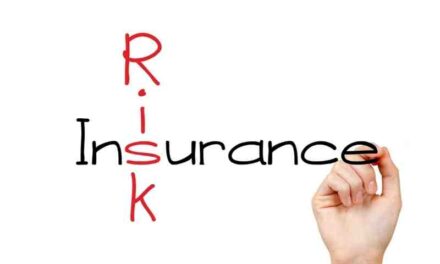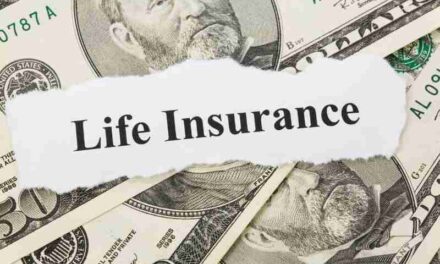When you die, the proceeds of your life insurance policy are distributed to the person or persons designated on the policy. Because your life insurance payment is intended for your life insurance beneficiary after you die and is only payable after your death in the majority of circumstances, it is not normally considered an asset and is not included in a will when you die.
One of the most important functions of your will is to offer directions for the distribution of your assets, which might include anything from your house to your jewels. During the probate procedure, assets are defined as everything of value that you possess, which is why your life insurance death benefit is not included against your total assets.
Because your life insurance payment is intended for your life insurance beneficiary after you die and is only payable after your death in the majority of circumstances, it is not normally considered an asset and is not included in a will when you die.
But there is one exception to this rule. If all of your beneficiaries pass away before you, your life insurance proceeds will be distributed to your estate rather than to a beneficiary. If this occurs, the conditions of your will determine how the money of your life insurance policy is dispersed. If you die without leaving a will, your life insurance proceeds are divided in accordance with the laws of your state.
Your net worth, which is an important indicator of your financial health, is calculated by comparing your assets to your liabilities. Assets assist you in funding your objectives, paying costs, and absorbing unexpected events, so the more you have, the better off you are.
Life insurance may be a valuable asset in certain situations. When an insured person dies, a death benefit (or a lump-sum payment) is paid out, and families often utilize life insurance to protect themselves from financial difficulty in such a situation. In the case of life insurance plans with a cash value, they may be used as assets as well as for a variety of other purposes.
What Exactly Is an Asset?
An asset is anything you own or control, and assets often have some form of monetary worth that you may use to supplement your income. A bank account, real estate, or a vehicle, for example, are all examples of financial holdings. Some of those assets may provide money, while others may just be valuable possessions.
Assets are really essential in terms of your financial situation. Your assets may help you achieve your objectives while also providing cash in times of need. They may also be used to hold value, allowing you to sell the item for a profit at a later date. Furthermore, in certain situations, assets generate income or grow in value, which might result in an increase in your net worth.
Is your insurance policy generating cash value?
Find out whether your life insurance policy has a cash value in order to assess whether or not it is an asset in your estate planning. In most cases, assets are only included when insurance has a monetary value (also known as “permanent policies”).
In order to build cash value in your policy, you must make payments into it at a pace that is greater than the cost of providing pure life insurance. The extra money is placed in your cash-value account, and you might possibly utilize that cash value at a future date.
Aside from being useful in itself, term insurance plans (which have no monetary value) are also important because they offer crucial life insurance protection. Term insurance plans, on the other hand, do not have a monetary value that can be accessed, hence they are not strictly considered an asset.
Which types of life insurance have the ability to accumulate cash value?
Permanent life insurance plans, in addition to providing a death benefit, may also provide access to the cash value of the policy via policy loans or withdrawals.
Whole life insurance premiums are normally fixed for the duration of the policy’s duration. The death benefit and cash values of this insurance may be guaranteed at the time of purchase, making them reasonably predictable.
Universal life: Premiums for universal insurance are adjustable, which might be beneficial if your financial situation changes over time. The cash value is determined by how much interest is credited to your account by the insurance provider, and you have no way of knowing how much interest you will earn in advance.
You may choose securities (mutual funds) to invest the cash value of a variable life insurance policy while purchasing a variable life policy. However, since the value of this asset fluctuates continually dependent on the success of your investments (and because you may lose money), it is difficult to determine its worth.
Cash-value life insurance includes a number of tax advantages that may be beneficial to you throughout your life. The cash value of your insurance builds tax-deferred, and it may be able to withdraw funds or borrow money from your policy without incurring a tax obligation.
Why Does It Matter If Your Life Insurance Is a Liability or an Asset?
The use of assets provides you with possibilities, but they also need particular thought in some circumstances. Here are a few examples.
Divorce or Bankruptcy: Which is better?
Any circumstance in which an honest estimate of your assets is required must take permanent life insurance plans into consideration. For example, a divorce agreement could stipulate that parties divide their assets, and the cash value of a life insurance policy might be included in that division of assets.
Loan Collateral is a piece of property that serves as security for a loan
In certain situations, you may also use life insurance as collateral for a loan, which makes it simpler to obtain authorization for the loan. An assignment of collateral occurs when you die before paying off your debt; the lender collects any leftover sum from your death benefit, with your heirs getting whatever is left over after you die.
It’s possible that you’ll be able to sell your policy
A life insurance policy, often known as a “viatical” settlement, may be able to assist in paying for long-term care and other bills, as well as other expenses. In most cases, these agreements are only possible to those who are elderly or have a shorter life expectancy.
A firm acquires your policy for a predetermined sum that you may spend for any reason (life settlement) or pay for long-term care expenditures (long-term care insurance) (viatical settlement).
However, if you utilize this sort of plan, your heirs may suffer since you will get a smaller payment and may spend the whole amount on end-of-life care rather than distributing it. That may be a good trade-off, but it’s important to remember that you’ll be foregoing your death benefit as a result of this decision.
Access to the Death Benefit Prior to the Recipient’s Death
When a life insurance policy has an accelerated death benefit, you may be able to collect monies from the policy before death, serving as a form of cash advance for long-term care or end-of-life care.
Any money you get, on the other hand, will be deducted from your death benefit. Alternatively, you may transfer money from a life insurance policy to an asset-based long-term care policy if you want to purchase long-term care insurance coverage.
Alternatives to Life Insurance as a Form of Investment
If you have life insurance, you should be aware that accessing money inside your policy might be time-consuming. For example, you may need to fill out paperwork (and wait for processing) in order to borrow from your policy or remove cash from your policy in order to make a withdrawal. Accessing the cash value might also raise the risk of a possible interruption in insurance protection if the policy is not renewed.
You may typically set up withdrawals and transfers online with other investment alternatives, as well as liquidate your whole account without incurring any penalties if you need to get all of your money back at once.
Other forms of investments may be more appropriate if you’re mainly interested in a vehicle for growth or tax benefits, or if you’re looking to support a particular goal (such as retirement, health care, or a child’s educational expenses).
Investing for Long-Term Growth
If your aim is to build your assets over the long term, you should consider investing in a variety of assets with varying risk and return characteristics. Permanent life insurance plans have a tendency to act in a conservative manner, like conservative investments (except for variable life policies, which allow you to invest in higher-risk securities).
For long-term development, you can consider investing in mutual funds or exchange-traded funds (ETFs) to construct a well-diversified portfolio of securities. You have the ability to decide how much risk is suitable for your situation, as well as to pick a stock and bond portfolio that is suited to your objectives and risk tolerance.

Meet Krishnaprasath Krishnamoorthy, a finance content writer with a wealth of knowledge and experience in the insurance, mortgage, taxation, law, and real estate industries.





